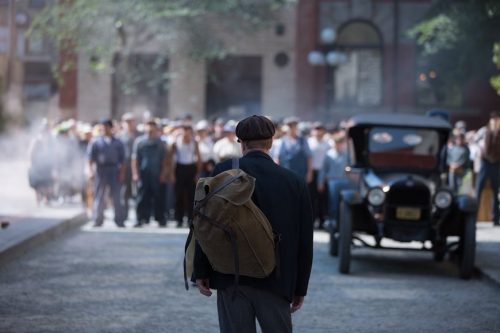By Mark Pattison | Catholic News Service
WASHINGTON (CNS) — Danny Schur, a Ukrainian Catholic from Canada, thought he knew all about the 1919 general strike that brought life in his native Winnipeg, Manitoba, to a standstill.
But it took another Canadian — biracial director Robert Adetuyi — to get him to stretch his perspective.

The result: A rousing stage musical, “Strike!” that premiered in 2005, has been transformed into the movie musical “Stand!” which had a successful run in Canada and is poised to play the film festival circuit in the United States after a coronavirus-induced halt last year.
“The first phone call he has to me,” Schur said of Adetuyi, “in his gentle, learned way, he said, ‘I’m just sayin’, Dan, this is a pretty white story. Would you be opening to discovering some narrative that you haven’t put there?'”
Schur did some digging. “I consider myself a decent historian,” he told Catholic News Service in a Jan. 4 phone interview from Winnipeg, but “I had not heard about the Oklahoman refugees. A lot of Canadians hadn’t. There was this great migration from about 1907 onward of Blacks to the north was not limited to the northern United States. Others came to Regina (Saskatchewan), and Winnipeg, and Edmonton (Alberta). In World War I, there was a regiment of all Blacks. It was blowing my mind.”
Out went the Irish maid, in came Black maid Emma (Lisa Bell), with a couple of songs newly written for her character.
“I had this thing for white Irish characters, because I knew there was this white Irish component to Winnipeg’s population,” Schur said. “A week later, Robert says, ‘You know, we should rally investigate this Indigenous side.'”

Along came Schur’s next surprise. The grounds of a former mall in Winnipeg “was a settlement meant for Metis people, which is the largely Canadian term for indigenous people who were mixed with French,” he said.
“You have to know about race politics in Canada. Pure-blood Indigenous people were forced to be on reserves,” Schur added, “but Metis people live amongst all the otherwise white Winnipeggers. But so close to where my ma was living was this settlement.” Metis soldiers in the Canadian armed forces “were particularly chosen for their skill as snipers” in World War I, he said. Thus was the character of Gabriel (Gabriel Daniels), one of the many jobless Canadian army veterans, changed to an indigenous person.
“Stand!” is still, at its essence, a love story wrapped around the Winnipeg general strike. Marshall Williams (“Glee”) and Laura Wiggins play star-crossed lovers — he a Catholic immigrant from Ukraine, which is convulsed by the Bolshevik revolution in neighboring Russia, she a Jewish firebrand advocating for equality and social justice.
Gregg Henry (“Scandal”) plays the Ukrainian lad’s father, who is trying to scrape together enough money to send for his wife and three other children to escape the tumult. Except that tumult finds them in Winnipeg, personified by a business tycoon (Paul Essiembre, “Rescue Heroes”) and a union organizer (Hayley Sales, “Cedar Cove”) on diametrically opposed sides of the strike.

Schur told CNS that Americans’ familiarity with general strikes tends to start, and stop, with the Seattle general strike, also in 1919. “But 1919 was the year when the whole world was on fire with them. Brisbane (Australia), Barcelona (Spain), Germany, and they were seen as highly revolutionary, This was the era of the first Red Scare,” he said.
“Black soldiers returned to the United States were being infested, they thought, with bolshevism. Mixed in with all this across North America, including Canada, 1919 was the year known as the Red Summer,” Schur added, not because of the frenzy over bolshevism, “but how much blood was spilled in 26 of the largest cities in the United States due to the white supremacist riots.”
Anyone seeing “Stand!” might wonder whether it’s an allegory tailored to today’s roiling social and political upheavals. Schur said it’s far from the first time he has been asked that question.
“Robert, our director, said, ‘Did you guys write this right now to be representative of recent events?’ The basic arc of the story comes from (it) having been written in 2004. Robert was always amazed as if it wasn’t a comment on current U.S. politics. He finds this, coincidentally, more American than Canadian,” Schur said.
“That is just an accident of timing, but it does show you about history repeating itself. It’s also that it doesn’t change. The events of the Black Lives Matter and the George Floyd movement of 2020, the Black community has been saying for the better part of the last 100 years: ‘Look at what’s happening to us!'”






















